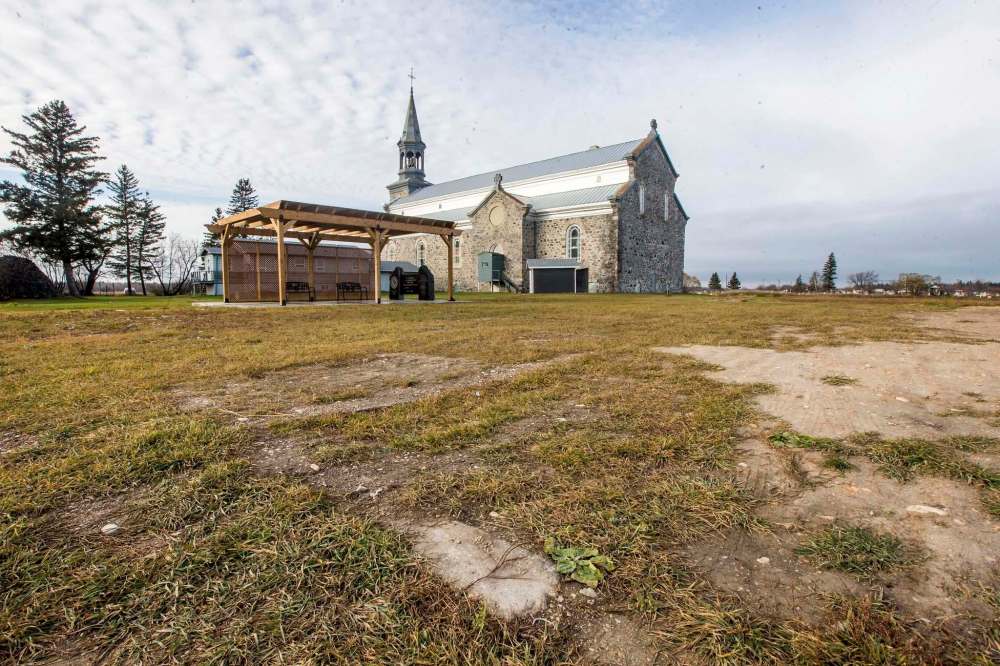Pine Creek First Nation plans search for unmarked residential-school graves
Advertisement
Read this article for free:
or
Already have an account? Log in here »
To continue reading, please subscribe:
Monthly Digital Subscription
$1 per week for 24 weeks*
- Enjoy unlimited reading on winnipegfreepress.com
- Read the E-Edition, our digital replica newspaper
- Access News Break, our award-winning app
- Play interactive puzzles
*Billed as $4.00 plus GST every four weeks. After 24 weeks, price increases to the regular rate of $19.00 plus GST every four weeks. Offer available to new and qualified returning subscribers only. Cancel any time.
Monthly Digital Subscription
$4.75/week*
- Enjoy unlimited reading on winnipegfreepress.com
- Read the E-Edition, our digital replica newspaper
- Access News Break, our award-winning app
- Play interactive puzzles
*Billed as $19 plus GST every four weeks. Cancel any time.
To continue reading, please subscribe:
Add Free Press access to your Brandon Sun subscription for only an additional
$1 for the first 4 weeks*
*Your next subscription payment will increase by $1.00 and you will be charged $16.99 plus GST for four weeks. After four weeks, your payment will increase to $23.99 plus GST every four weeks.
Read unlimited articles for free today:
or
Already have an account? Log in here »
Hey there, time traveller!
This article was published 12/11/2021 (1432 days ago), so information in it may no longer be current.
OTTAWA — Another Manitoba reserve is planning a ground search of its residential school for unmarked graves.
Pine Creek First Nation Chief Derek Nepinak announced on Facebook a meeting next Tuesday “to begin the process of searching the residential school grounds” located near Camperville, about 425 kilometres northwest of Winnipeg.
The meeting will include “presentations from the technical engineers doing the survey.”

Nepinak was not available Thursday or Friday for an interview.
The Indian Residential Schools Settlement Agreement recognized 14 schools in Manitoba, and First Nations have started ground searches in Brandon, Dauphin, Sandy Bay, Sagkeeng and Long Plain. Other First Nations are trying to access funding to begin their own.
It’s unclear how much area the Pine Creek band will search; the school covered roughly 632 acres, including farming fields.
The Catholic Church ran the Pine Creek school from 1890 to 1969, with an emphasis on farming over education. The Truth and Reconciliation Commission found evidence of frequent runaways from the school.
Survivors told the TRC of being stripped of their traditional clothes when they arrived at the school and of being whipped by staff.
Bernard Catcheway testified that nuns hit kids in the head when they waved at their siblings, and forced children to eat their own vomit.
In 1928, the school principal wrote to Ottawa, arguing a dozen runaways in one week were caused by too much discipline. “I would not keep the students on such a tight leash; the bow that is always bent will break. It is hard for children to stay silent for long or to sit still for a certain amount of time.”
There are already 21 documented deaths among students while attending the school, such as a girl who died of tuberculosis in May 1942.
Albert Nepinak died in April 1951 after running away with two other boys. The school assumed they all made it home, but Albert wasn’t able to cross a river and collapsed alone on a trail, where he succumbed to the cold and was found by his father.
Officials knew the school was unsafe for decades, having been built before enhanced construction codes.
In 1928, the school principal noted that bricks kept falling off the bread oven, causing thick smoke to waft through the school, leaving girls “crying while making bread.” He warned if the oven completely collapsed, the whole school might catch fire.
In 1939, an inspector found the joists and cross beams holding up the school floor were sinking, which a local authority deemed “urgent and dangerous.”
A year later, former Manitoba education minister R. A. Hoey was working as an Indian Affairs superintendent, and recommended the school be closed. Minor repairs were done instead.
By 1959, roofs were leaking and the principal complained that measurements were repeatedly taken for new toilets and showers that were never built.
At that point, there were two toilets for 80 boys and another two for 75 girls, including day students. There was just one shower and one bathtub for 65 boys and three bathtubs for 65 girls.
As with other residential schools, there were frequent fires, some intentionally set. A student destroyed the local church in September 1930, and children made multiple attempts to burn down the school buildings over the decades. In 1951, a 12-year-old girl was remanded for trying to burn down her dormitory in the hopes she’d be sent home.
In 1923, parent Frank Flatfoot complained on behalf of the Pine Creek band that children were spending half the day farming on poor land “but little time is spent in teaching the Indian children reading, writing, and arithmetic.”
The school housed kindergarten to Grade 9 children. Graduating pupils were often sent to the Fort Alexander residential high school on the Sagkeeng reserve, 300 kilometres away.
When the Pine Creek school closed in 1969, students were transferred to other residential schools in Sandy Bay and The Pas.
dylan.robertson@freepress.mb.ca
History
Updated on Friday, November 12, 2021 5:36 PM CST: Adds second fact box

